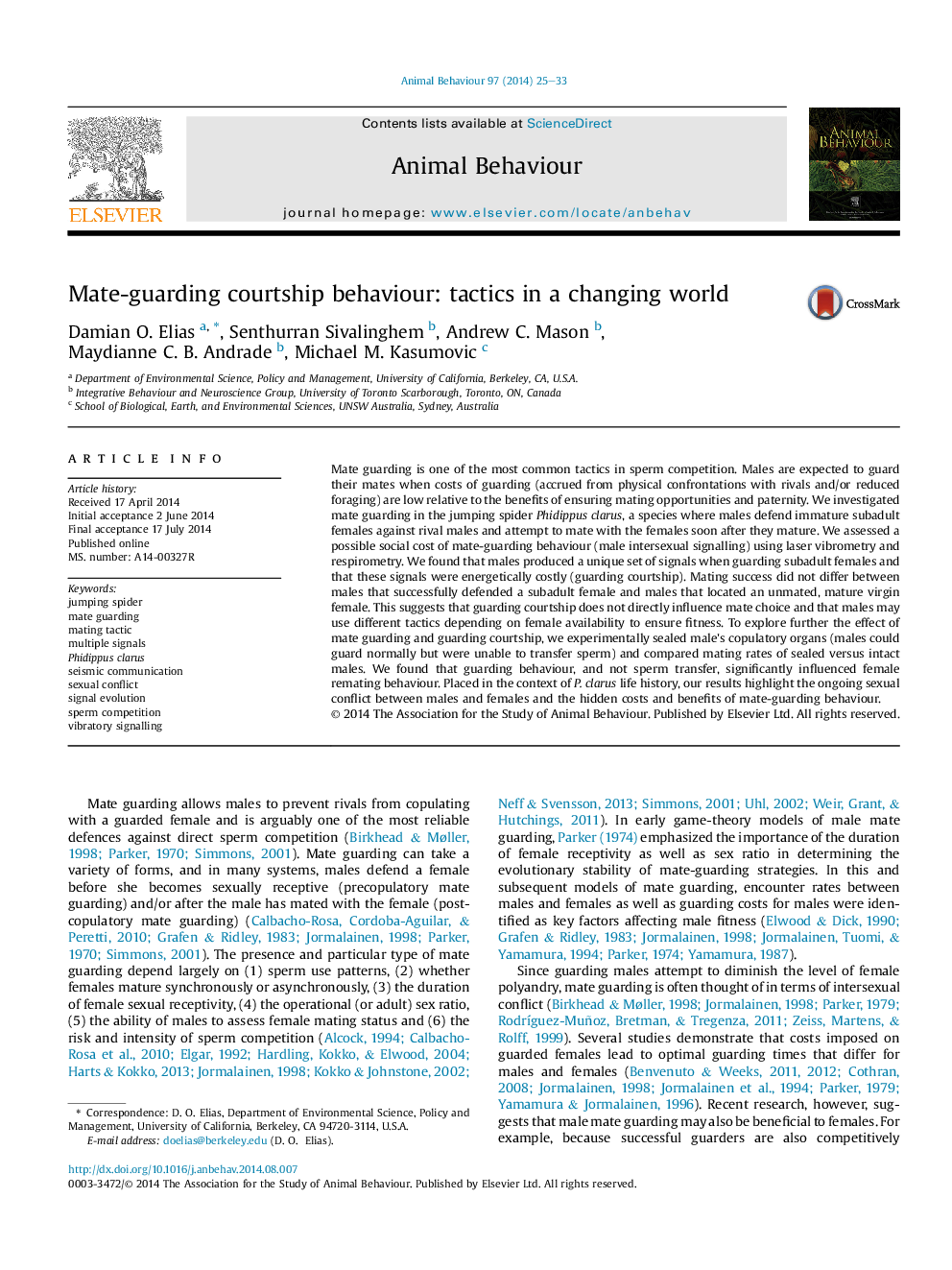| Article ID | Journal | Published Year | Pages | File Type |
|---|---|---|---|---|
| 8490269 | Animal Behaviour | 2014 | 9 Pages |
Abstract
Mate guarding is one of the most common tactics in sperm competition. Males are expected to guard their mates when costs of guarding (accrued from physical confrontations with rivals and/or reduced foraging) are low relative to the benefits of ensuring mating opportunities and paternity. We investigated mate guarding in the jumping spider Phidippus clarus, a species where males defend immature subadult females against rival males and attempt to mate with the females soon after they mature. We assessed a possible social cost of mate-guarding behaviour (male intersexual signalling) using laser vibrometry and respirometry. We found that males produced a unique set of signals when guarding subadult females and that these signals were energetically costly (guarding courtship). Mating success did not differ between males that successfully defended a subadult female and males that located an unmated, mature virgin female. This suggests that guarding courtship does not directly influence mate choice and that males may use different tactics depending on female availability to ensure fitness. To explore further the effect of mate guarding and guarding courtship, we experimentally sealed male's copulatory organs (males could guard normally but were unable to transfer sperm) and compared mating rates of sealed versus intact males. We found that guarding behaviour, and not sperm transfer, significantly influenced female remating behaviour. Placed in the context of P. clarus life history, our results highlight the ongoing sexual conflict between males and females and the hidden costs and benefits of mate-guarding behaviour.
Keywords
Related Topics
Life Sciences
Agricultural and Biological Sciences
Animal Science and Zoology
Authors
Damian O. Elias, Senthurran Sivalinghem, Andrew C. Mason, Maydianne C.B. Andrade, Michael M. Kasumovic,
